ErgoX Home
| Time |
Activity |
Description |
Presenters |
| 8:00-8:20 a.m. |
Coffee and Networking |
|
Click Photo for Bio/Abstract |
|
8:20-8:30 a.m.
|
Opening Remarks |
Kermit Davis, Ph.D., CPE, FHFES, FAIHA, FIEA, Professor, Department of Environmental and Public Health Sciences, University of Cincinnati |
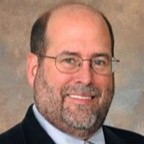 |
| 8:30-9:00 a.m. |
Open Plenary: Disruptive and Emerging Technologies in Applied Ergonomics |
Mark Benden Ph.D., CPE, Professor, Director of the Center for Worker Health, Texas A & M University |
 |
| 9:00-9:30 a.m. |
Achieving High ROI with Ergonomics from Hire to Retire: A Proven Model 20+ Years in the Making |
Dr. James D. Rethaber, Ph.D., CPE, LSSMBB, Vice President, Fit For Work |
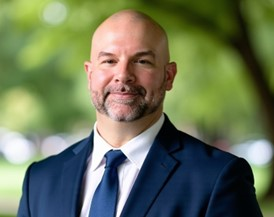 |
| 9:30-10:00 a.m. |
Break and Networking |
|
|
| 10:00-11:00 a.m. |
Debate - Are Exoskeletons a Viable Occupational Intervention |
William Marras, Ph.D., CPE FHFES,Professor and Director, Spine Research Institute, The Ohio State University
Conor Walsh, Ph.D., Paul A. Maeder Professor of Engineering and Applied Sciences, Associate Faculty Member, Wyss Institute for Biologically Inspired Engineering Harvard University
|
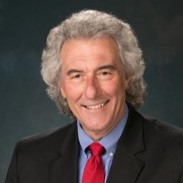

|
|
| 11:00-12:00 p.m. |
Ergonomic Toolkit: Practitioners Guide to Assessment |
Sheree Gibson, PE, CPE, (Mostly) Retired Ergonomics Engineer, Ergonomics Applications
Susan Kotowski, Ph.D.., CPE, Professor, Department of Rehabilitation Sciences, University of Cincinnati, College of Allied Health Sciences
|


|
| 12:00-1:30 p.m. |
Lunch (Provided) and Networking |
|
|
| 1:30-3:00 p.m. |
Real-World Solution to a Real-World Ergonomic Problem |
Kermit Davis, Ph.D., CPE, FHFES, FAIHA, FIEA, Professor, Department of Environmental and Public Health Sciences, University of Cincinnati
Dickson Rungere, BS, 2nd year Ph.D. Student, Department of Environmental and Public Health Sciences, University of Cincinnati
Ryan Bellacov, 4th year Ph.D. Student, Department of Environmental and Public Health Sciences, University of Cincinnati
Amour Cornelius Dondi, MS, ASP, 3rd year Ph.D. Student, Department of Environmental and Public Health Sciences, University of Cincinnati
Mercy Omoifo-Irefo, 2nd year Ph.D. Student, Department of Environmental and Public Health Sciences, University of Cincinnati
|

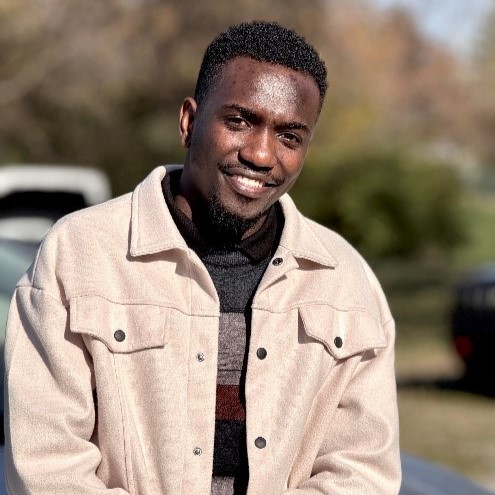
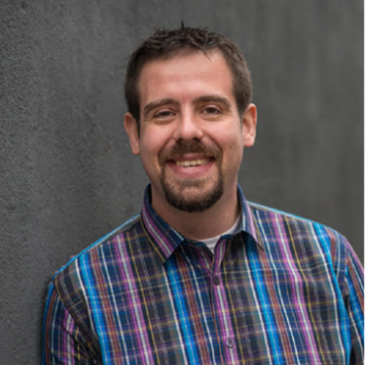
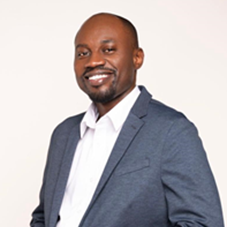

|
| 3:00-3:30 p.m. |
Break and Networking |
|
|
| 3:30-4:30 p.m. |
Everybody’s Ergonomics Problem: The Office |
Michelle Robertson, Ph.D., CPE, FHFES, FIEA, Executive Director, Office Ergonomics Research Committee
Yishu Yan, Ph.D., Machine Learning Engineer, University of California, San Francisco
Kevin Butler, MS, CPE, Fitwel Amb, Senior Ergonomist, Steelcase
|
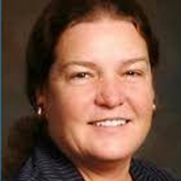

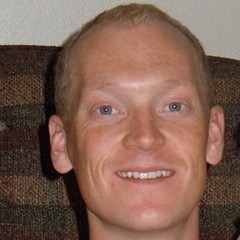
|
| 4:00-5:00 p.m. |
Job Rotation: Assessment of Current Practices for Musculoskeletal Disorder Risk using Fatigue Failure Tools |
Michael Jorgensen, Ph.D., Professor, Department of Industrial, Systems and Manufacturing Engineering, Wichita State University
Sean Gallagher, Ph.D., CPE, FHFES, Professor Emeritus, Department of Industrial and Systems Engineering, Auburn University
|

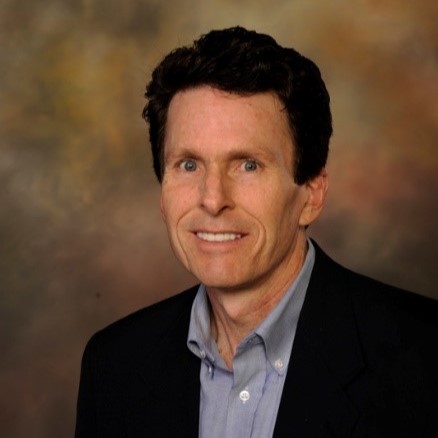
|
| 5:00-5:10 p.m. |
Closing Remarks |
|
|
| 6:00-8:00 p.m. |
ASPIRE Opening Welcome Reception |
|
|
Speaker Bios and Abstracts
Open Plenary: Disruptive and Emerging Technologies in Applied Ergonomics
Mark Benden Ph.D., CPE
Dr. Benden’s career includes experience as an Army officer, inventor, rehabilitation engineer, ergonomics consultant, plant & corporate ergonomics engineer, executive vice president, CEO & CTO. He serves as Executive Director of the TAMU Center for Worker Health and is Department Chair for the Environmental & Occupational Health Department within the School of Public Health. He is the author of many articles, books, and books and has spoken to multiple professional groups worldwide. He has been married to his wife, Teresa, for 37 years and has 3 sons, 3 daughters in love, and 8 grandchildren.
Abstract:
The current state of applied ergonomics is being impacted by next-generation humans who are generally less healthy and fit, combined with emerging technologies that promise to train, evaluate, and improve those same humans in an improved manner. This discussion will review those human changes over the past 50 years and introduce enabling technological solutions that promise to more than compensate for changes to people and a more competitive operating environment. New diagnostics, prevention methods, and medical treatments are rapidly evolving. Understanding how they relate to ergonomics, fieldwork will be reviewed. Remote and hybrid work is becoming the new norm, and we need to understand how to deal with training and office environments when workers are not in person. Finally, AI and Digital humans will help us solve some of our more complex facilities, equipment, risk assessment, and intervention needs. These technological developments, combined with co-robots and semi-automation, are set to become more commonplace. AI and quantum computing will impact applied ergonomics in the next 5-10 years – are you ready?
9:00-9:30 a.m.
Achieving High ROI with Ergonomics from Hire to Retire: A Proven Model 20+ Years in the Making
Dr. James D. Rethaber, Ph.D., CPE, LSSMBB, Vice President, Fit For Work
James Rethaber is Vice President of Technical Operations at Fit For Work. Dr. Rethaber has over 20 years of experience in engineering, psychology, and musculoskeletal injury prevention, and has completed over 10,000 physical demands analyses and ergonomics-related assessments in nearly every industry. Dr. Rethaber is a Board-Certified Professional Ergonomist (CPE) and a Lean Six Sigma Master Black Belt. Dr. Rethaber serves on industry advisory boards at Texas A&M University – College Station and Texas State University – San Marcos and is a former member of the Board of Directors with the Board of Certification in Professional Ergonomics (BCPE).
Abstract:
In an era of extremely tight budgets and increasing demands for operational efficiency, ergonomics programs must deliver more than just injury reduction – they must prove their financial value! This session explores a model of achieving a high return on investment (ROI) from ergonomics initiatives by aligning interventions with business priorities, leveraging data-driven decision-making, and focusing on proactive risk mitigation. Drawing on real-world case studies from diverse industries, this presentation will outline strategies for quantifying cost savings, productivity gains, and quality improvements resulting from ergonomics improvements. Attendees will gain actionable insights into setting measurable goals, selecting high-impact projects, and effectively communicating value to stakeholders. Whether launching a new program or scaling an existing one, this session provides a roadmap for turning ergonomics from a perceived “nice to have” into a strategic “need to have”.
10:00-11:00 a.m.
Debate - Are Exoskeletons a Viable Occupational Intervention
William Marras, Ph.D., CPE FHFES,Professor and Director, Spine Research Institute, The Ohio State University
William S. Marras is the Distinguished University Professor and holds the Honda Endowed Chair in Integrated Systems Engineering at The Ohio State University. He serves as the Director of the Spine Research Institute at The Ohio State University, where he leads NIH, NSF, DoD, Ohio BWC, and privately funded research efforts. Dr. Marras also holds joint academic appointments in the Department of Orthopaedic Surgery, the Department of Neurosurgery, and the Department of Physical Medicine & Rehabilitation. His research is focused on understanding multidimensional causal pathways for spine disorders through quantitative epidemiologic evaluations, laboratory biomechanical studies, personalized mathematical modeling, and clinical studies of the lumbar and cervical spines. His findings have been published in over 300 peer-reviewed journal articles, hundreds of refereed proceedings, and numerous books and chapters, including The Working Back: A Systems View.
Conor Walsh, Ph.D., Paul A. Maeder Professor of Engineering and Applied Sciences, Associate Faculty Member, Wyss Institute for Biologically Inspired Engineering, Havard University
Dr. Conor Walsh is the Paul A. Maeder Professor of Engineering and Applied Sciences at the John A. Paulson Harvard School of Engineering and Applied Sciences. He is the founder of the Harvard Biodesign Lab, which brings together researchers from engineering, industrial design, apparel, biomechanics, physical therapy, and business communities to develop and translate new disruptive robotic technologies for augmenting and restoring human performance. Example application areas include enhancing the mobility of healthy individuals, restoring the mobility of patients with gait deficits, assisting those with upper extremity weakness in performing activities of daily living, and preventing injuries of workers performing physically strenuous tasks.
Abstract:
Exoskeletons designed to relieve musculoskeletal stress during work have evolved rapidly over the past decade. Many organizations have tested these devices in the laboratory, and some have examined their efficacy under actual work conditions. Yet, much remains unknown about these devices' cost-benefit tradeoffs. The literature reports a broad spectrum of analysis approaches, ranging from worker/study participant subjective impressions to quantitative biomechanical assessments of how users interact with the devices. The debate will provide a unique experience to discuss the pros and cons of exoskeletons as an occupational intervention.
11:00-12:00 p.m.
Ergonomic Toolkit: Practitioners Guide to Assessment
Sheree Gibson, PE, CPE, (Mostly) Retired Ergonomics Engineer, Ergonomics Applications
Sheree L. Gibson is a semi-retired ergonomics consultant. She has practiced industrial ergonomics for more than 35 years. A graduate of West Virginia University with a bachelor’s degree in mechanical engineering and a master’s in applied ergonomics, she is a licensed professional engineer and a certified professional ergonomist. She is a former chair of the AIHA Ergonomics Committee, where she remains active. She was a co-author of An Ergonomics Guide to Computer Workstations, Third Edition, and is currently working on the ergonomics chapters in the latest edition of The Occupational Environment. She was one of the principal authors of the current OSHA Computer Workstation Checklists. She is a Fellow of AIHA and has received several AIHA awards, including Outstanding Individual Contributor. Sheree was one of the original developers of the AIHA Ergonomic Assessment Toolkit and was instrumental in its update.
Susan Kotowski, Ph.D.., CPE, Professor, Department of Rehabilitation Sciences, University of Cincinnati, College of Allied Health Sciences
Susan E. Kotowski is a Professor at the University of Cincinnati College of Allied Health Sciences, where she has taught and researched in the areas of ergonomics and biomechanics for 20 years. She is a graduate of the University of Cincinnati Colleges of Medicine and Engineering (PhD in Occupational Ergonomics and Safety, MS in Environmental and Occupational Hygiene, MS in Industrial Engineering), and the University of Dayton College of Engineering. She has co-authored four book chapters on ergonomics and is active in HFES and in the AIHA Ergonomics Committee. She is a Certified Professional Ergonomist and a Fellow of AIHA. Susan was one of the original developers of the AIHA Ergonomic Assessment Toolkit and was instrumental in its update.
Abstract:
To reduce the occurrence of work-related musculoskeletal disorders (WMSDs), practitioners need to be able to effectively assess the risk in jobs and tasks. While there are many tools that can and should be used to assess the risk of WMSDs, guidance is frequently needed on which tool(s) to utilize in each particular situation. To help meet this need, the Ergonomic Assessment Toolkit was originally developed by the AIHA Ergonomics Committee in 2007 and was significantly updated in 2023. The Toolkit currently includes 26 tools that are free to the public and require minimal equipment. Information provided for each tool includes the tool developers, risk factors and regions of the body considered, and type of tasks that could be analyzed with the tool. It also includes links to electronic version of each tool and how much training and time is required to utilize the tool. Additionally, the authors have developed a flow chart to explain our tool selection methodology, as well as adding a new section discussing some assessment tools that may require more equipment and/or expertise. The Toolkit is a living document and is intended to evolve with the science and research methods. In this session we will cover how to utilize the Toolkit and work through an example from assessment to potential solutions.
12:00-1:30 p.m.
Lunch (Provided) & Networking
1:30-3:00 p.m.
Real-World Solution to a Real-World Ergonomic Problem
Kermit Davis, Ph.D., CPE, FHFES, FAIHA, FIEA, Professor, Department of Environmental and Public Health Sciences, University of Cincinnati
Dr. Kermit Davis is a Professor at the University of Cincinnati, where he is the Division Director of the Environmental and Industrial Hygiene division in the Department of Environmental and Public Health Science. Dr. Davis is a past president of the Human Factors and Ergonomics Society (HFES) and a Fellow of HFES (2013), the American Industrial Hygiene Association (2019), and the International Ergonomics Society (2023). He is the Director of the University of Cincinnati’s Education and Research Center, which the National Institute sponsors for Occupational Safety and Health.
Dickson Rungere, BS, 2nd year Ph.D. Student, Department of Environmental and Public Health Sciences, University of Cincinnati
Dickson Rungere is an international student from the United Republic of Tanzania pursuing Ph.D. in Occupational Safety and Ergonomics at the University of Cincinnati. I acquired a Bachelor of Science in Environmental Engineering at the University of Dodoma in Dodoma, Tanzania. I worked as a health, safety, and environmental officer for two years at a mega-project for hydropower dam construction named Julius Nyerere Hydropower Project in the United Republic of Tanzania.
Ryan Bellacov, 4th year Ph.D. Student, Department of Environmental and Public Health Sciences, University of Cincinnati
Ryan Bellacov has worked with multiple professors at the University of Cincinnati as co-investigators on various occupational safety projects. I have been blessed with 16 years as an allied healthcare provider. Working in healthcare quality improvement research has given me new ambitions to save lives from behind the scenes by focusing on prevention. I have a broad background in ergonomics, with specific training and expertise in public health data analysis on primary care.
Amour Cornelius Dondi, MS, ASP, 3rd year Ph.D. Student, Department of Environmental and Public Health Sciences, University of Cincinnati
Amour Cornelius Dondi is a third-year Ph.D. student pursuing Occupational Safety and Ergonomics at the University of Cincinnati, School of Environmental and Public Health Sciences. He has worked on various research projects focusing more on investigating Occupational Exposures for workers in healthcare settings. Amour has 6 years of experience in Occupational Safety, ranging from environmental health and safety specialist roles in various construction and local manufacturing settings.
Mercy Omoifo-Irefo, 2nd year Ph.D. Student, Department of Environmental and Public Health Sciences, University of Cincinnati
Mercy Omoifo-Irefo is an Occupational Health and Safety Professional with over 22 years of experience in safety health and environmental management, ergonomics, industrial hygiene, and workplace safety. I am pursuing a Ph.D. in Occupational Safety and Ergonomics at the University of Cincinnati. My research focuses on evaluating the impact of occupational exposures on worker health and the interaction between physical ergonomics, cognitive demands, and hazardous substance inhalation. Key projects include assessing the correlation between improper body alignment and respiratory health risks among industrial workers, investigating firefighter hyperthermia and cardiovascular strain using advanced cooling systems, exploring mental stress and burnout in-home healthcare workers, examining the ingress and egress challenges of hospital beds, and examining job rotation impact on discomfort.
Abstract:
The team will present the ergonomic evaluation of a job in the industry, including using multiple ergonomic assessment tools, processing data, and developing multiple recommendations. The team will walk through the entire evaluation and recommendation development. An audience discussion will also be included in the session.
3:00-3:30 p.m.
Break and Networking
3:30-4:30 p.m.
Everybody’s Ergonomics Problem: The Office
Michelle M. Robertson, Ph.D., CPE, FHFES, FIEA, Executive Director, Office Ergonomics Research Committee
Dr. Michelle Robertson is the Executive Director of the Office Ergonomics Research Committee, a lecturer at Northeastern University, School of Business, the University of California, Berkeley Center of Occupational and Environmental Health, and a research faculty at the University of Connecticut, Psychological Sciences. Previously, she was a research scientist in human factors and ergonomics at the Liberty Mutual Research Institute for Safety and was on the faculty at the University of Southern California, Human Factors Department. Dr. Robertson has conducted over 25 years of field and Applied Human Factors & Ergonomics intervention research projects using systems and macroeconomics approaches and has published over 110 articles. She is on the Board on Human-Systems Integration (BOHSI), Academies of Sciences. Dr. Robertson holds a Ph.D. in Instructional Technology and an M.S. in Systems Management from the University of Southern California, as well as a B.A. in Human Factors/Ergonomics from the University of California, Santa Barbara.
Yishu Yan, Ph.D., Machine Learning Engineer, University of California, San Francisco
Dr. Yishu Yan is a Machine Learning Engineer at Risk & Safety Solutions, University of California, focusing on ergonomic safety solutions. She holds a Ph.D. in Mechanical Engineering from UC Berkeley, where she conducted research as part of the UC Human Factors and Ergonomics Lab and the Berkeley Biomechanics Lab. Her research interests include utilizing various technologies, such as wearables, machine learning, and other advanced tools, studying human factors, analyzing human motions, and performing ergonomic risk assessments.
Kevin Butler, MS, CPE, Fitwel Amb, Senior Ergonomist, Steelcase
Although Kevin has extensive experience as an ergonomics consultant, for the last several For years, he has been almost completely dedicated to the holistic topic of well-being. While Kevin’s primary role at Steelcase began in understanding the meaning of workplace Well-being by bench-marking and best-practice-sharing, it has evolved into maximizing his knowledge and expertise as a practitioner. This is realized by assisting organizations of varying sizes in designing and implementing their Ergonomic and Wellness program development efforts, always striving to leverage the workplace as a resource to increase individual and organizational Well-being. Kevin holds professional affiliations with several organizations, including but not limited to the Board of Certification in Professional Ergonomics and the Office Ergonomics Research Council.
Abstract:
As new ways of working are emerging among knowledge and computer workers, understanding the HFE implications for designing new technologies, workplaces, and work styles is essential. Applying HFE design principles to create new workplace strategies, hybrid work arrangements, and computer technologies benefits workers' health, safety, well-being, and performance. This panel presentation will discuss the importance and benefits of incorporating a human factors and ergonomics approach from both the micro- (individual workers and technology design) and macro- (team, organizational, and workspace environmental design) perspectives to effectively support and protect workers’ well-being and to enhance their performance. A systems approach model will first be presented to frame the HFE context around office ergonomics. Next, a discussion will address designing collaborative workspaces and best practices to support hybrid work. Lastly, a focus on mouse design technology and its effects on workers’ well-being will be presented. A concluding summary and takeaways will be given regarding the benefits of using HFE principles in office ergonomics.
4:00-5:00 p.m.
Job Rotation: Assessment of Current Practices for Musculoskeletal Disorder Risk using Fatigue Failure Tools
Michael Jorgensen, Ph.D., Professor, Department of Industrial, Systems and Manufacturing Engineering, Wichita State University
Dr. Michael Jorgensen is a Professor in the Industrial, Systems, and Manufacturing Engineering Department at Wichita State University, where he is responsible for the Industrial Ergonomics curriculum and research. His research has assessed intervention strategies for preventing work-related musculoskeletal injuries, including passive shoulder exoskeletons, job rotation, and segmental vibration to reduce vibration exposure to aircraft manufacturing workers. Before joining Wichita State University, he was an Industrial Engineer and Ergonomist with the U.S. Occupational Safety and Health Administration in the Office of Ergonomic Support in Washington, DC. He worked as a consultant for an ergonomics consulting firm.
Sean Gallagher, Ph.D., CPE, FHFES, Professor Emeritus, Department of Industrial and Systems Engineering, Auburn University
Dr. Sean Gallagher is the Pennington Professor (Emeritus) in Auburn University’s Department of Industrial and Systems Engineering, having previously worked for the National Institute for Occupational Safety and Health. He is best known for his model of musculoskeletal disorders as a fatigue failure process, about which he has written a book with Dr. Mary F. Barbe. Dr. Gallagher is a two-time recipient of the International Ergonomics Association /Liberty Mutual Medal in Occupational Safety and Ergonomics. He is a Fellow of the Human Factors and Ergonomics Society (HFES), the American Industrial Hygiene Association (AIHA), and the International Ergonomics Association (IEA).
Abstract:
The practice of rotating employees through different workstations/jobs within a given time frame (e.g., one work shift) is neither new nor rare in the manufacturing industry. Job rotation is used to increase the production skillset of employees to provide employment/staffing flexibility in the production process. From a musculoskeletal disorder risk perspective, the objective is to reduce repetitive exposure and accumulated biomechanical loading to specific body parts. The effectiveness of a job rotation scheme depends in part on how well biomechanical stress is minimized across numerous body parts. An optimal (balanced) job rotation scheme would minimize the biomechanical stress on each of the body regions by ensuring that the jobs in the rotation scheme alternate the physical demands on the body. Quantifying actual exposure would provide valuable information on whether existing job rotation schemes adequately balance WMSD risk factor exposures and the ability of these schemes to control WMSDs.
5:00-5:10 p.m.
Closing Remarks
Interested in sponsoring ErgoX? Contact HFES Sales Manager Michael Sanders at Msanders@hfes.org, or check out the Exhibit and Sponsorship page for details.